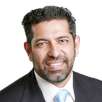Though traditionally a male-dominated discipline, dentistry is increasingly welcoming women into the fold, and female dental students now outnumber their male counterparts in many countries. In advance of the International Women’s Day on 8 March, the Paris-based dental surgeon Dr Anne Longuet Tuet spoke with Kuraray Noritake Dental about the challenges that women may face in dentistry and what it takes to succeed in this environment.
Dr Longuet Tuet, how did you decide to enter the field of dentistry?
I have always wanted to work in a medical profession. Initially, I wanted to be a veterinarian, but then, at a certain point, I spent a lot of time in a dentist’s office. She was also a woman, a teacher at the local university, and I saw what she could do and was inspired to help people in a similar way in order to let them smile again.
In your experience, are there any advantages or disadvantages to being a woman in dentistry? Has the situation changed over time?
I regularly lecture, and this still tends to be a very male-dominated arena. For example, at a lecture last year in Tunis, there were ten of us on stage and I was the only woman. Being a female lecturer can sometimes be a bit of a disadvantage, as we often have to work harder than the average male lecturer to prove ourselves and receive the same level of recognition. However, this will hopefully change in the future as more women prove themselves to be highly capable in this field.
Do you have any female mentors or role models in dentistry that you look up to?
Someone I really admire is Dr Francesca Vailati, who has contributed so much to modern adhesive dentistry through her lectures and research articles.
How important is it to have peers and mentors with whom you can have discussions?
I think it’s very important to have female peers and mentors, but it’s also worth remembering that men should also be part of your network. It’s nice to see other women when I give lectures or attend conferences, of course, but I also have plenty of male peers I admire and who help me grow professionally.
If you don’t consider men for mentorship, you can really limit yourself in the dental world, so it’s better to be open-minded in this respect. Good mentorship isn’t necessarily related to gender but instead to knowledge, experience, charisma and a willingness to share your expertise.
What do you need to succeed in the dental world?
I think the most important quality is a commitment to lifelong learning. It’s dangerous to think that you know everything there is to know about dentistry—there’s always an area in which you can improve. Even when you’re at a certain level and have been practising for many years, there’s always some new technology or technique that you can learn or something that you can improve on.
Of course, this is not just on the personal level. Dental materials and technologies are constantly evolving, and if you stop learning about them, you stop being up to date, right?
This is especially true if you work in adhesive dentistry. You need to be aware of the new bonding products and materials that are introduced to the market, since this can be a way of improving your work and the cases you treat.
How were you first introduced to Kuraray Noritake Dental’s wide range of adhesive solutions?
It was about four years ago, just after I really began to develop my restorative and adhesive dentistry skills. I was looking for a way to improve my composites and the way I bonded my ceramic restorations, and a friend of mine told me that the company’s CLEARFIL MAJESTY range of composites was very good. I was sent some samples soon afterwards and have been using the company’s products ever since.
Which Kuraray Noritake products do you use in your daily workflow?
Since 80% of my work at the practice is now restorative dentistry, I use the CLEARFIL MAJESTY ES-2 composite every day, as well as Kuraray’s PANAVIA adhesive cement. In addition, the dental lab that I work with uses KATANA Zirconia regularly to manufacture dental crowns.
Tags:
As the manager of a dental practice and the co-founder of the Deutsches Zahnärztinnensymposium (DZÄS), an event that provides a forum for female dentists ...
As a dental technician with many years of experience, Björn Roland has always pursued one goal in his lab: restorations that seamlessly mimic natural ...
Though one is a master dental technician and the other a dentist, Daniele Rondoni and Dr Nicola Scotti share a passion for discovering new materials and ...
Dr Magdalena Osiewicz has run her own private practice in Cracow in Poland since 2010 while also working as assistant professor at Jagiellonian ...
In this interview, Dr Adham Elsayed, certified specialist in dental prosthodontics and implants and clinical and scientific manager at Kuraray Noritake ...
Before universal adhesives were available, two major techniques were used: total-etching adhesives, which basically work with phosphoric acid etching on ...
The use of porcelain veneers to improve and restore the shape, shade and visual position of anterior teeth is a common technique in aesthetic dentistry. The...
TOKYO, Japan: To complement its comprehensive portfolio of multilayered zirconias—KATANA Zirconia Multi-Layered series—and veneering porcelain for ...
Alexander Aronin is a master dental technician dedicated to the creation of high-end handmade porcelain restorations. He runs a dental laboratory and ...
TOKYO, Japan: It has been ten years since Kuraray Medical and Noritake Dental Supply joined forces to create Kuraray Noritake Dental, and this merger has ...
Mr. Stratos Chatzichristos CDT
Dr. Gerard Chiche, Prof. Dr. Markus Blatz
Prof. Nicola Scotti, Prof. Lorenzo Breschi
RDT Aki Yoshida, DT Nondas Vlachopoulos
Dr. Mike Skramstad, Dr. Sameer Puri



 Austria / Österreich
Austria / Österreich
 Bosnia and Herzegovina / Босна и Херцеговина
Bosnia and Herzegovina / Босна и Херцеговина
 Bulgaria / България
Bulgaria / България
 Croatia / Hrvatska
Croatia / Hrvatska
 Czech Republic & Slovakia / Česká republika & Slovensko
Czech Republic & Slovakia / Česká republika & Slovensko
 France / France
France / France
 Germany / Deutschland
Germany / Deutschland
 Greece / ΕΛΛΑΔΑ
Greece / ΕΛΛΑΔΑ
 Italy / Italia
Italy / Italia
 Netherlands / Nederland
Netherlands / Nederland
 Nordic / Nordic
Nordic / Nordic
 Poland / Polska
Poland / Polska
 Portugal / Portugal
Portugal / Portugal
 Romania & Moldova / România & Moldova
Romania & Moldova / România & Moldova
 Slovenia / Slovenija
Slovenia / Slovenija
 Serbia & Montenegro / Србија и Црна Гора
Serbia & Montenegro / Србија и Црна Гора
 Spain / España
Spain / España
 Switzerland / Schweiz
Switzerland / Schweiz
 Turkey / Türkiye
Turkey / Türkiye
 UK & Ireland / UK & Ireland
UK & Ireland / UK & Ireland
 Brazil / Brasil
Brazil / Brasil
 Canada / Canada
Canada / Canada
 Latin America / Latinoamérica
Latin America / Latinoamérica
 USA / USA
USA / USA
 China / 中国
China / 中国
 India / भारत गणराज्य
India / भारत गणराज्य
 Japan / 日本
Japan / 日本
 Pakistan / Pākistān
Pakistan / Pākistān
 Vietnam / Việt Nam
Vietnam / Việt Nam
 ASEAN / ASEAN
ASEAN / ASEAN
 Israel / מְדִינַת יִשְׂרָאֵל
Israel / מְדִינַת יִשְׂרָאֵל
 Algeria, Morocco & Tunisia / الجزائر والمغرب وتونس
Algeria, Morocco & Tunisia / الجزائر والمغرب وتونس
 Middle East / Middle East
Middle East / Middle East
:sharpen(level=0):output(format=jpeg)/up/dt/2024/04/EvoDent-showcases-latest-dental-solutions-at-Krakdent-2024.jpg)
:sharpen(level=0):output(format=jpeg)/up/dt/2024/04/Osstem-Implant-lends-a-hand.jpg)
:sharpen(level=0):output(format=jpeg)/up/dt/2024/04/Study-links-e-cigarette-use-with-increased-risk-of-heart-failure.jpg)
:sharpen(level=0):output(format=jpeg)/up/dt/2024/04/Clearcorrect-launches-new-digital-solutions-globally.jpg)
:sharpen(level=0):output(format=jpeg)/up/dt/2024/04/High-quality-digitalisation-for-automation-precision-and-customer-satisfaction-Fig.-1.jpg)











:sharpen(level=0):output(format=png)/up/dt/2014/02/MIS.png)
:sharpen(level=0):output(format=png)/up/dt/2022/01/Straumann_Logo_neu-.png)
:sharpen(level=0):output(format=png)/up/dt/2014/02/3shape.png)
:sharpen(level=0):output(format=png)/up/dt/2022/01/Sprintray_Logo_2506x700.png)
:sharpen(level=0):output(format=png)/up/dt/2023/03/ACTEON_NEW-logo_03-2024.png)
:sharpen(level=0):output(format=png)/up/dt/2022/05/osstem_logo.png)
:sharpen(level=0):output(format=png)/up/dt/2014/02/kuraray.png)
:sharpen(level=0):output(format=jpeg)/up/dt/2020/03/img-1.jpg)
:sharpen(level=0):output(format=gif)/wp-content/themes/dt/images/no-user.gif)
:sharpen(level=0):output(format=jpeg)/up/dt/2020/03/Dr-Frederike-Fehrmann.jpg)
:sharpen(level=0):output(format=jpeg)/up/dt/2019/08/Bjorn-roland.jpg)
:sharpen(level=0):output(format=jpeg)/up/dt/2019/07/our_italian_experts_1.jpg)
:sharpen(level=0):output(format=jpeg)/up/dt/2020/04/magdalena-osiewicz.jpg)
:sharpen(level=0):output(format=jpeg)/up/dt/2021/02/DSC_0044-U.jpg)
:sharpen(level=0):output(format=jpeg)/up/dt/2018/01/peter-schouten.jpg)
:sharpen(level=0):output(format=jpeg)/up/dt/2023/11/Optimising-functional-and-aesthetic-parameters-in-veneer-cementation_1.jpg)
:sharpen(level=0):output(format=jpeg)/up/dt/2023/07/Combination-of-effect-liquids-and-micro-layering-on-highly-aesthetic-zirconia.jpg)
:sharpen(level=0):output(format=jpeg)/up/dt/2023/12/The-high-end-manual-refinement-process-remains-unchanged.jpg)
:sharpen(level=0):output(format=jpeg)/up/dt/2022/09/shutterstock_1704165919.jpg)











:sharpen(level=0):output(format=jpeg)/up/dt/2024/04/What-to-do-to-avoid-air-bubbles.jpg)
:sharpen(level=0):output(format=jpeg)/up/dt/2024/03/Flowable-injection-technique.jpg)
:sharpen(level=0):output(format=jpeg)/up/dt/2024/02/UNILATERAL-BITE-ELEVATION-fig1.jpg)
:sharpen(level=0):output(format=jpeg)/wp-content/themes/dt/images/3dprinting-banner.jpg)
:sharpen(level=0):output(format=jpeg)/wp-content/themes/dt/images/aligners-banner.jpg)
:sharpen(level=0):output(format=jpeg)/wp-content/themes/dt/images/covid-banner.jpg)
:sharpen(level=0):output(format=jpeg)/wp-content/themes/dt/images/roots-banner-2024.jpg)
To post a reply please login or register